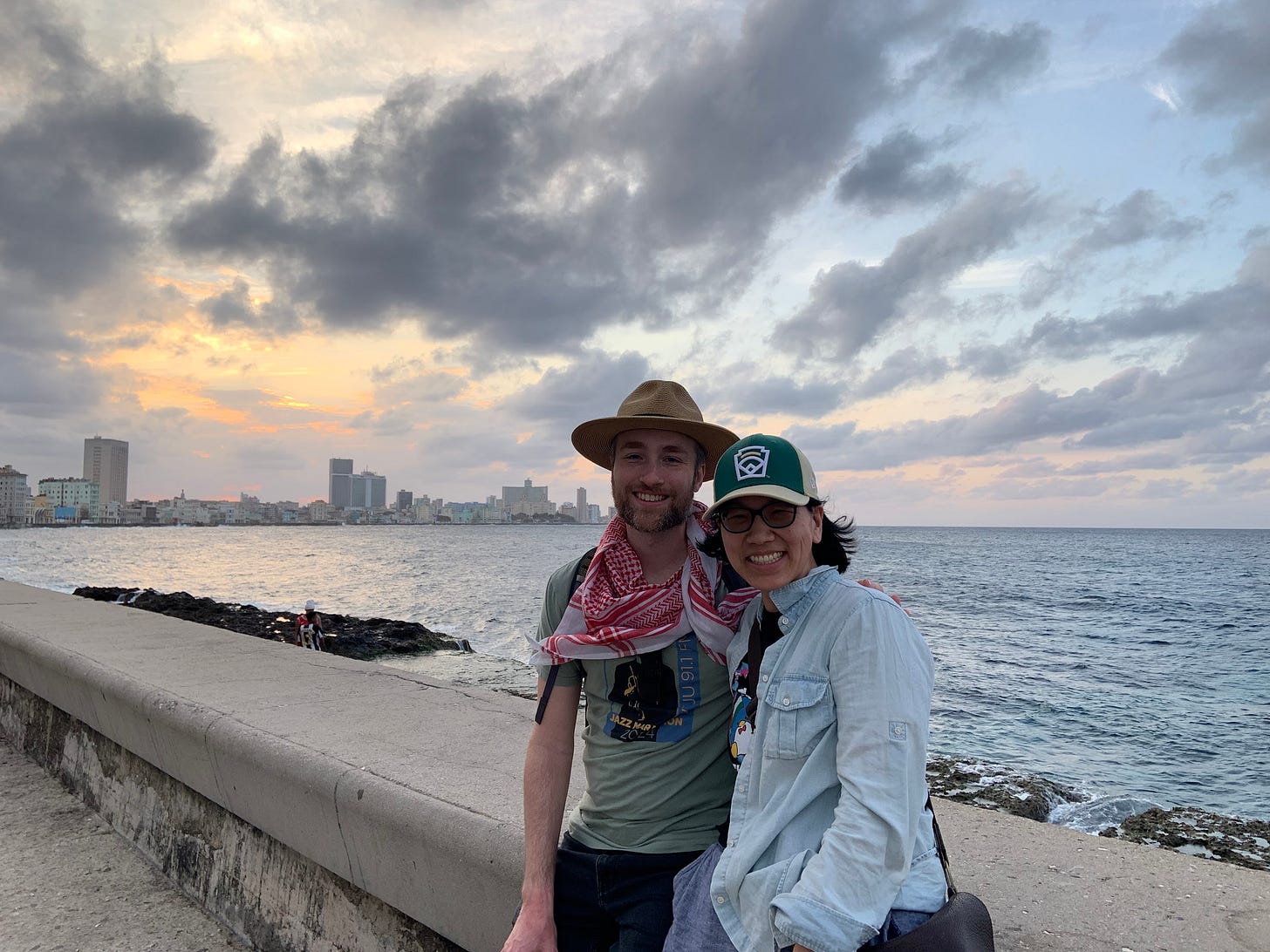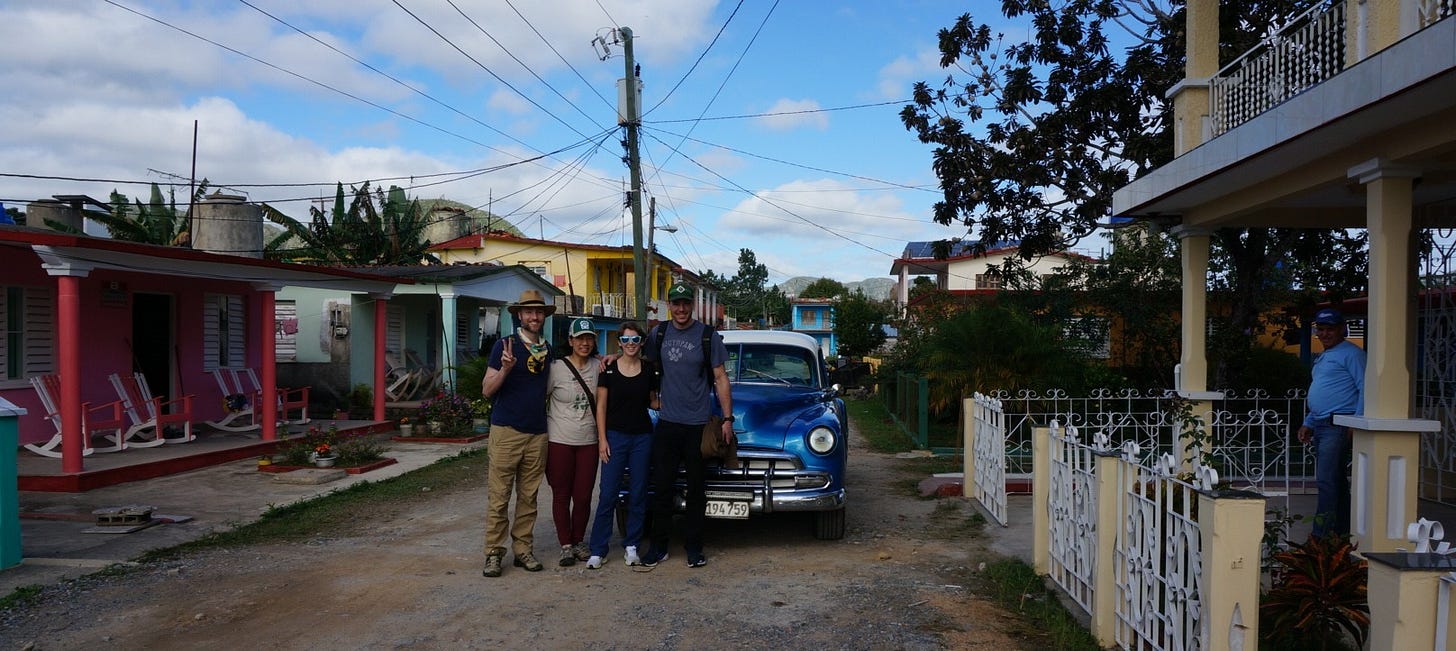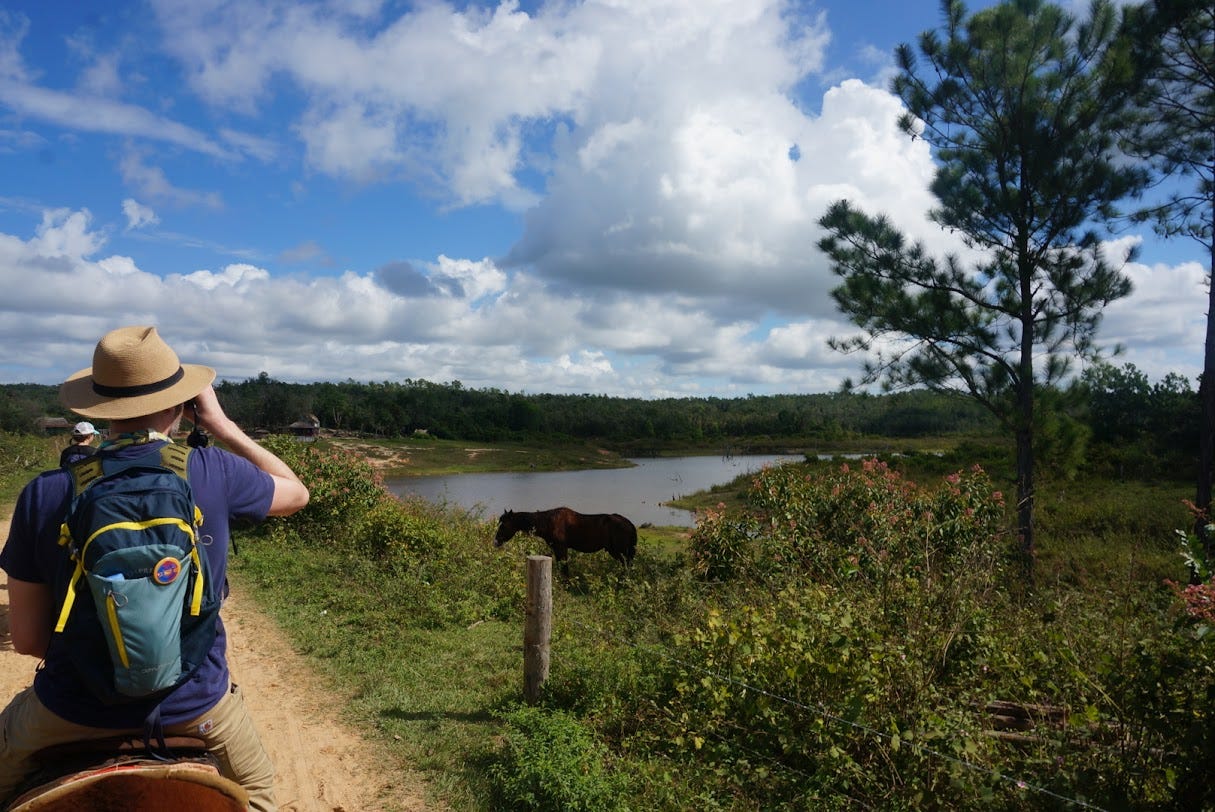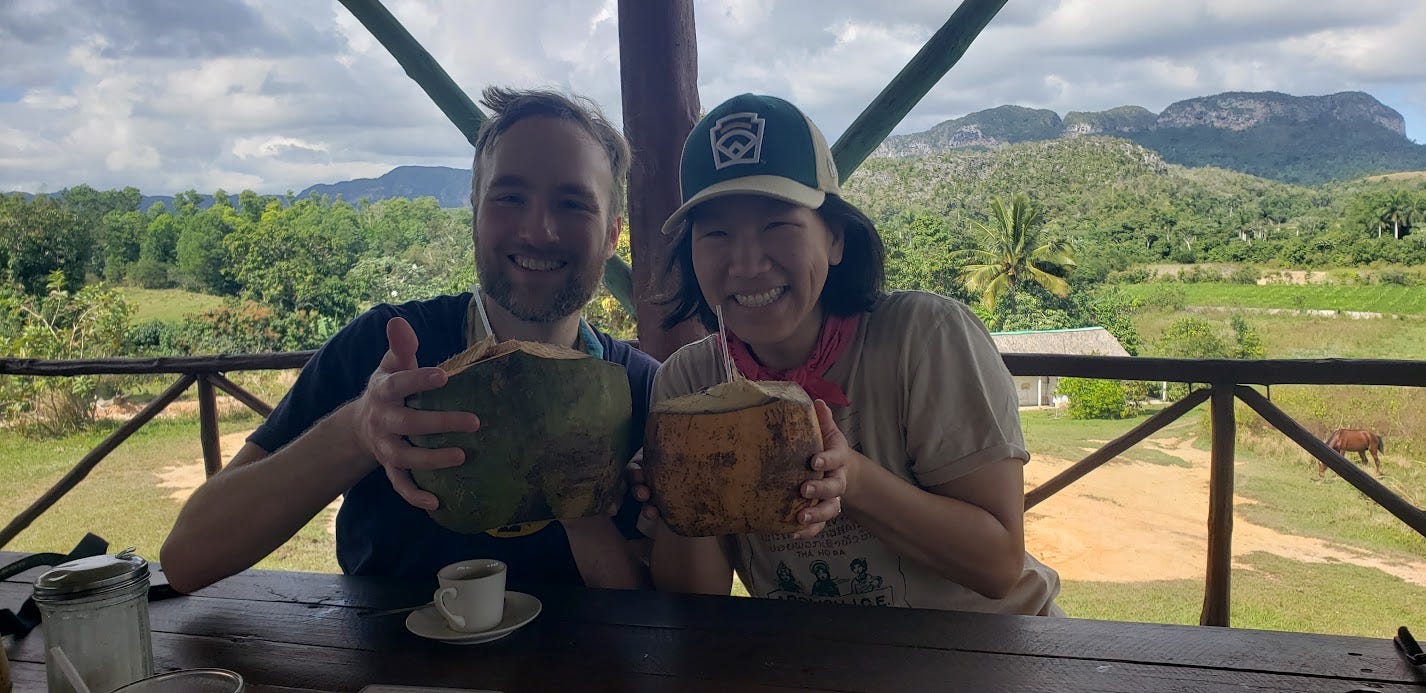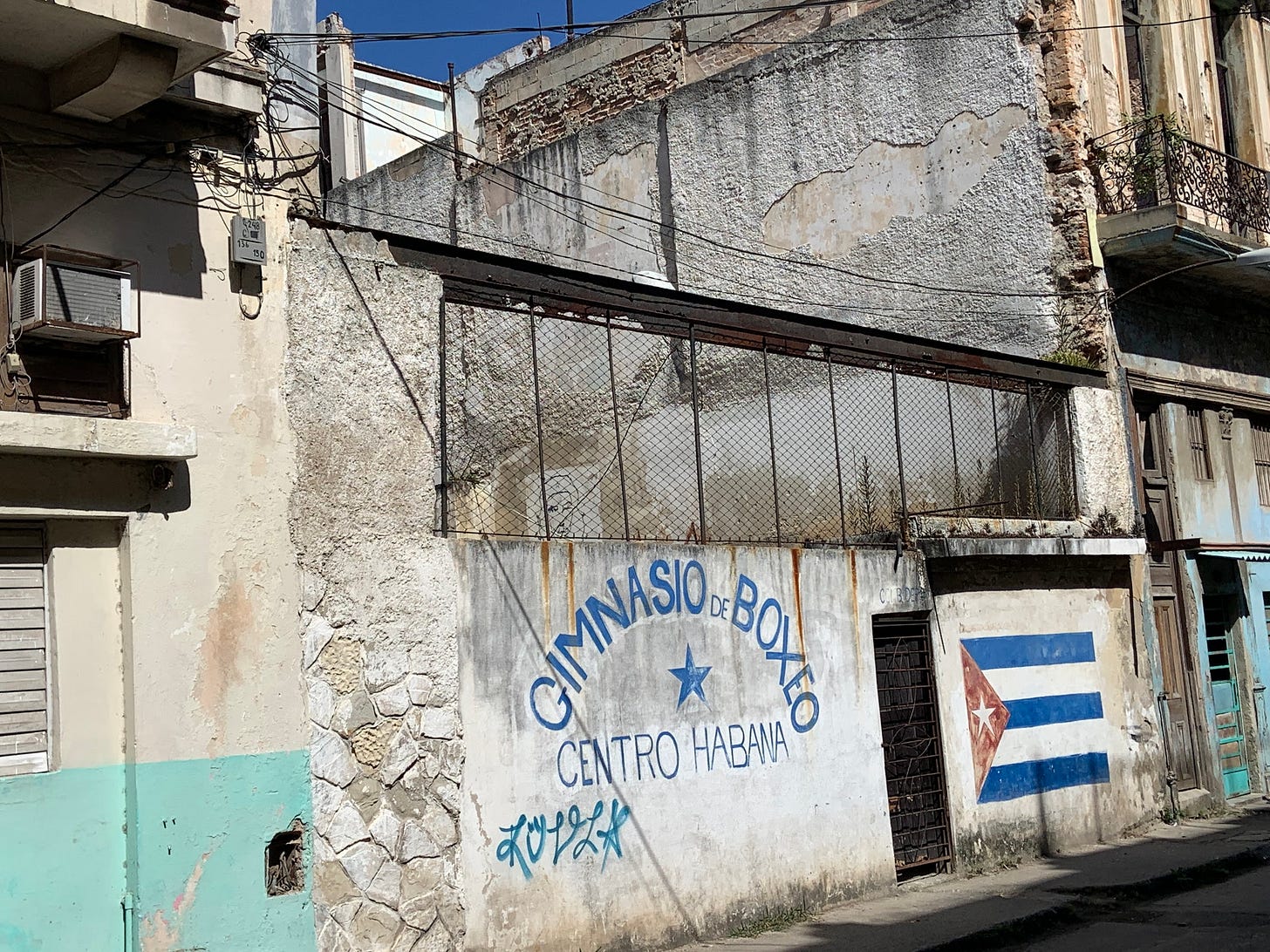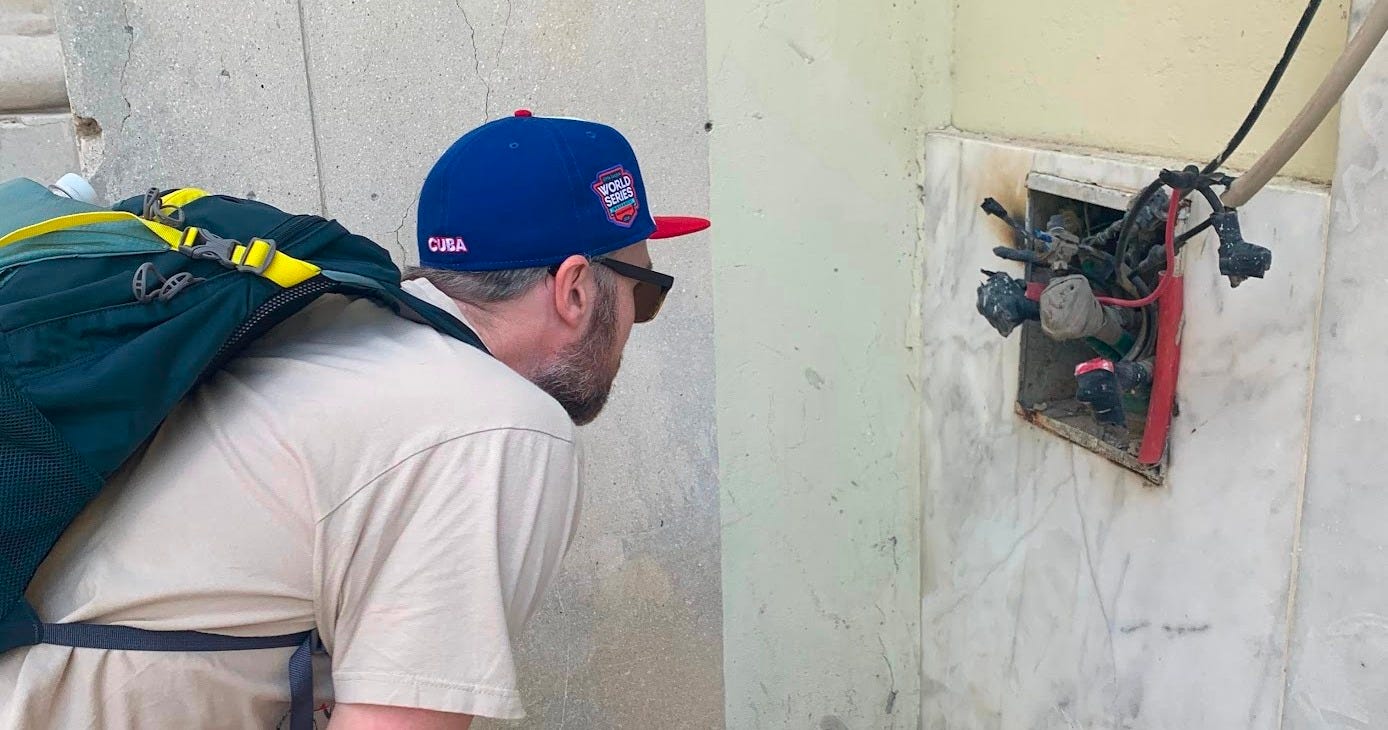If you know me, you’re likely well aware that I took a trip to Havana back in October 2023 and wrote an extensive blog series on my experience because I haven’t shut up about our neighboring country since.
Despite the trip being a significant life event, I hadn’t planned on returning in the near-term. I had decided that until I developed conversational proficiency in Spanish, I would hold off. Unfortunately, since Trump was elected president and tapped notorious Cuba hawk Marco Rubio for Secretary of State, I felt that if I wanted to go there with Jen, we had better do it now.
And so we did!
Quick note: As is typical, this post got too long! So it'll be divided into two parts—the first focusing more on the trip itself, and the second on some conversations/observations/thoughts.PSA: You, too, can go to Cuba
A quick word before I talk about my own trip:
While it seems impossible to visit Cuba, it’s not! The blockade exists to make it as annoying as possible, and it exists to make it seem like you have to jump through a billion difficult hoops to make it happen. While hoops do exist, when it comes down to it, they’re really no big deal. Any person can travel to Cuba under the reason “Support for the Cuban People”—there are just certain easy-to-follow rules that go along with it. And you do have to get a visa, but you can just buy it online (in fact, American Airlines links a place to get one when you purchase your ticket).
Doing this all myself instead of through a travel agency (which is how DSA organized our trip) was a little nerve-wracking because I wanted to make sure all of my ducks were in a row. But, comrade, if you want to go to Cuba, I have absorbed all the pain for you! Just ask and I will help. It’s really no problem.
Travel Styles
This trip was way different from the first. When I went with DSA, we were on a pretty strict schedule because we were there for a particular purpose. In order to learn about the affects of el bloqueo on the Cuban people from as many angles as possible, our stops were very official—at the school we went to, we were shown around by the principal; at the hospital, the doctors presented to us; touring a neighborhood, the schoolchildren treated us to a variety show. We did have downtime, but it wasn’t a significant amount.
This time, we were free to do our thing. We did travel with two friends, but they were down to go with the flow of whatever I planned (with some on-the-fly adjustments here and there). We saw some sights, we hit up recommended restaurants, we took a daytrip out west, we listened to live music, we simply walked around.
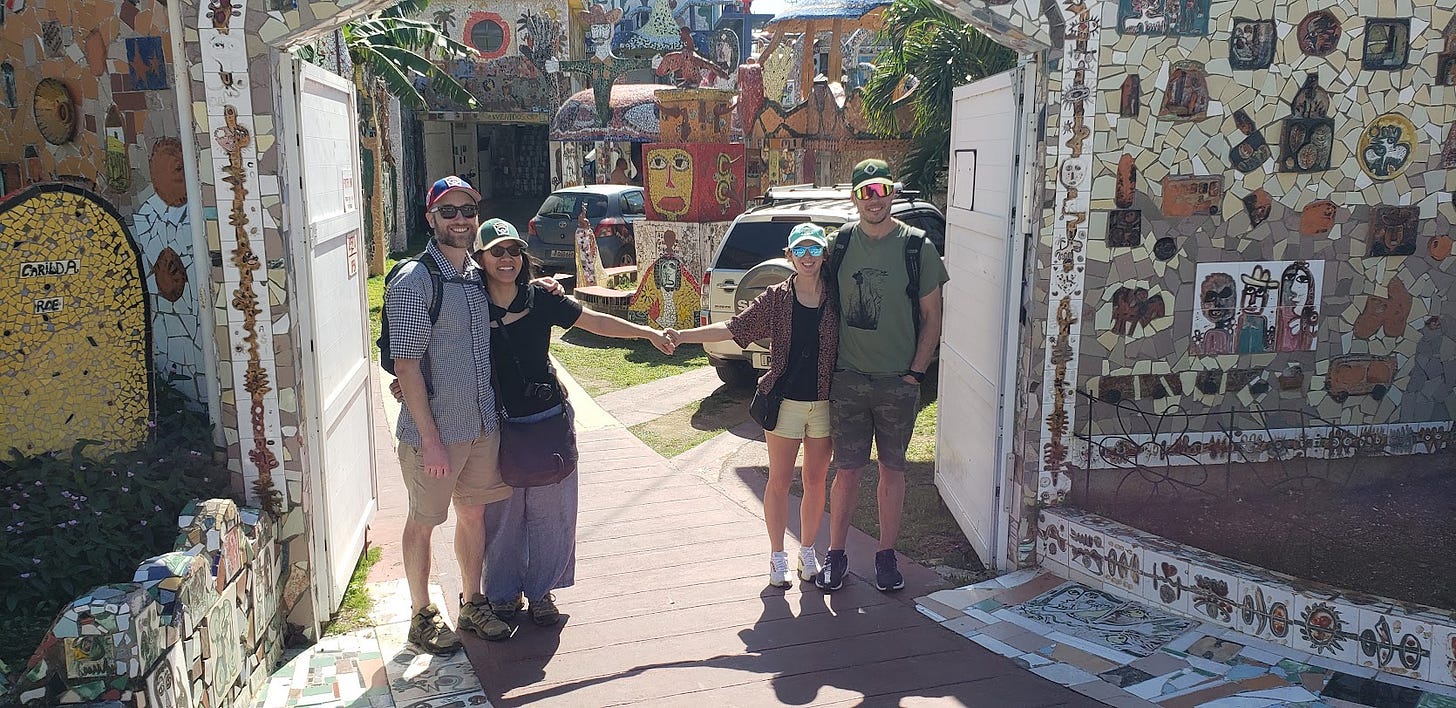
Both styles of traveling were rewarding in their own ways. Since I found myself giving a lot of context to some of the things that we saw based on what I learned on my first trip (and my reading outside of it, too), I’m happy this was the order in which I experienced the country. For any leftist interested in traveling in a group setting, I highly recommend checking out info on one of the many brigades that take groups of Americans to the island (many are annual; some visit more often).
Viñales
Although we spent most of our time in Havana, my favorite part of the trip was when we took a day excursion to Viñales, a town in Pinar del Rio province about 3 hours west of Havana by car.
Before our trip, I had told our casa particular (AirBnB) hosts, Jorge and Niurka, that we had wanted to go out that way. Turns out, they have a relative who lives there who owns horses and gives tours, so we were able to set everything up through him.
Viñales is a striking place all around. In the midst of its luscious natural environment and farmlands stands a small town with low-rise, colorful buildings and bustling streets. Our hosts—the driver and tour guide alike—interacted with their neighbors from the car while we made our way to our destinations. It was easy to get a sense of how tight the community was simply by observing people living their lives through our vehicle.
On horseback, we strode through Viñales Valley, a UNESCO World Heritage site. At the Valle del Silencio, we stopped at a hut to, what else, drink rum from a coconut and then an espresso while taking in the scenery. Our host pointed out how the farmland in the valley is extremely regulated so that all of the processes remain 100% natural.
We continued to one of said farms, where we toured the grounds, learned about how they grow and cultivate tobacco and coffee, and had a huge lunch (ropa vieja; rice and beans; plantains; chicken; greens).
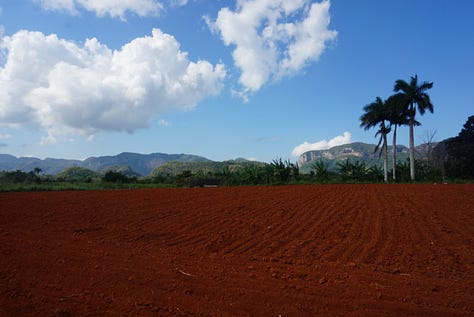
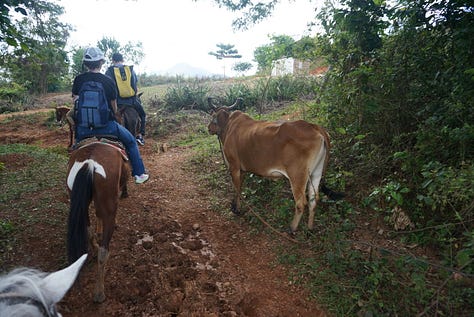
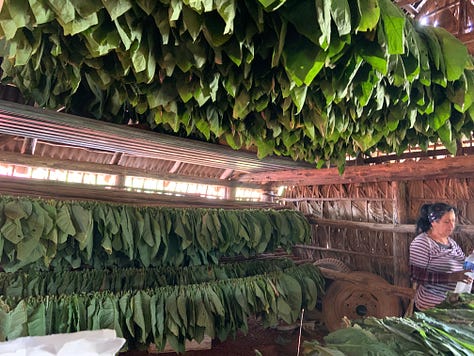
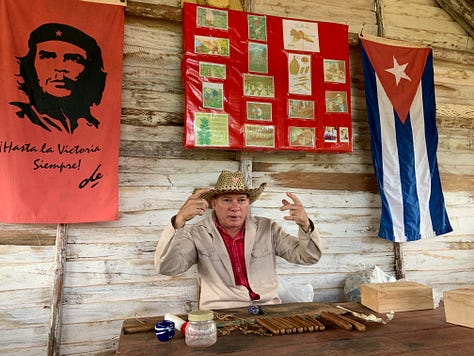
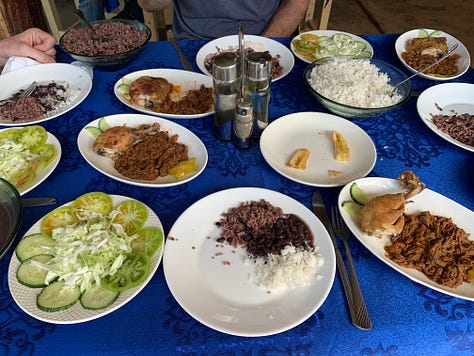
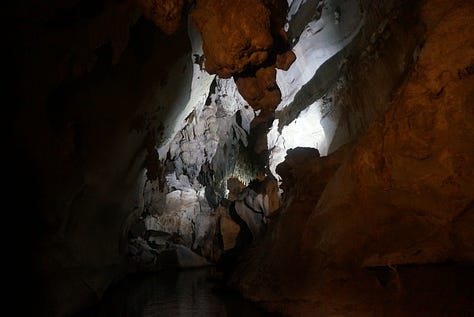
After our journey on horseback came to an end, our host unexpectedly took us to a couple of famous sites, the Mural of Prehistory and the Cave of the Indians.

It was a long, unforgettable day in one of the most beautiful places on earth. Don’t go to Cuba without making a trip out west.
Havana
We did too much in Havana in recount on this blog, so I want to highlight some specific observations and experiences that may be of interest.
One thing about Cuba that folks may not realize is that it’s extremely safe. If you simply look at photos of the streets of Havana, it resembles places that may be a little rough, especially at night. Dogs roam freely and poop on the streets; trash piles up on street corners; buildings are old and dilapidated. While people do have their [well-known and documented] hustles for tourists, all interactions with locals on the streets were ones of friendly conversation; otherwise, people kept to themselves. This distinct mix is, I think, a byproduct of the blockade on one side, and revolutionary culture on the other.
Another feature of the streets that my apprenticeships attunes me to is the state of infrastructure. Let’s just say that something like this wouldn’t be up to code in the States:
Of course, I think of everything in terms of the blockade. It’s a wonder how the Cuban people are able to keep things functioning despite impossible restrictions. What’s even crazier, though, is that, in contrast to that, how much we waste.
A lot of y’all are thinking ‘duh, of course, we’re famous for that.’ But that sentiment rises to extreme levels when every day you see people frivolously tossing supplies unnecessarily simply because UVA has the resources to buy new things without a second thought. We replace lights while they’re still functioning and toss them instead of recycling; we toss motors worth thousands because they were bought years ago and have just been sitting around; we trash wire and bolts and junction box covers and countless other parts that can easily be repurposed. It’s enough to make one go mad by itself; it’s even harder not to when you visit a country like Cuba. They needn’t struggle—we have plenty of resources! If our government didn’t fabricate the conditions in Cuba and elsewhere in the global south, forcing them to struggle, they wouldn’t!
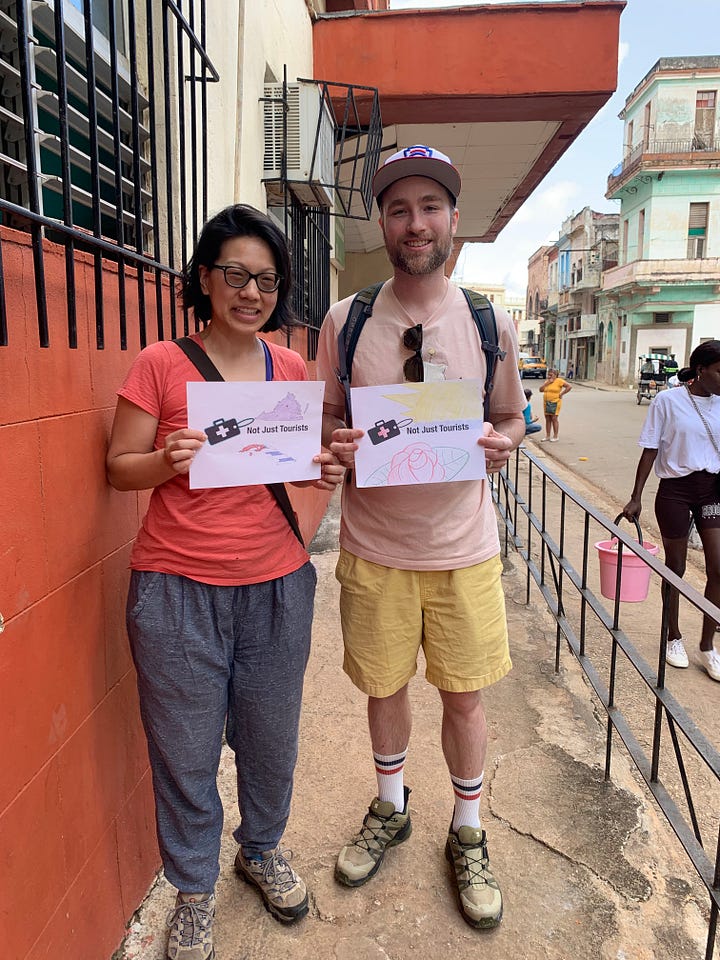
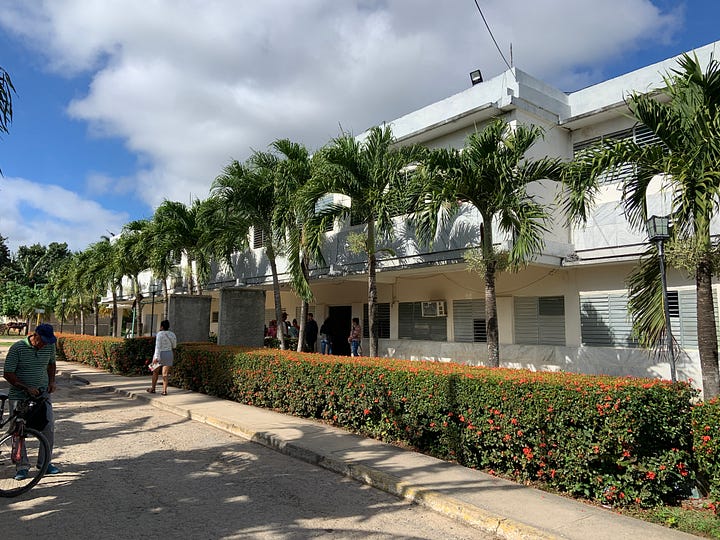
Witnessing these conditions and thinking about them naturally put our experiences into perspective. We were able to buy some of the most expensive meals one could in Cuba for the equivalent of a box combo at Raising Cane’s while seeing people lining up for rations in the street.
The hardest contrast to stomach was when we went to a ritzy seaside paladar (private restaurant) in the middle of a neighborhood. We effectively stepped into another world. It was beautiful and serene, and the food was incredible. But everything was too pristine. Too sterile. The speakers pumped the soft techno beats of an LA socialite club; the place settings and furniture were unblemished. Spots like that shouldn’t exist while the real conditions of everyday people are as they are. To me, it highlighted the injustice of the growing inequality faced by Cubans in light of the loosening restrictions on the private sector in favor of moving towards some sort of market socialism.
To be clear, these experiences didn’t make us enjoy our trip any less enjoyable. Rather, the dialectical synthesis of them gave way to heightened awareness, empathy, understanding, and solidarity. Everyone should be able to have nice things. In fact, we could! American capitalism and imperialist domination and exploitation of the global south is why we don’t. It really can be distilled to just that! We must acknowledge that fact when where we can, and then act appropriately.
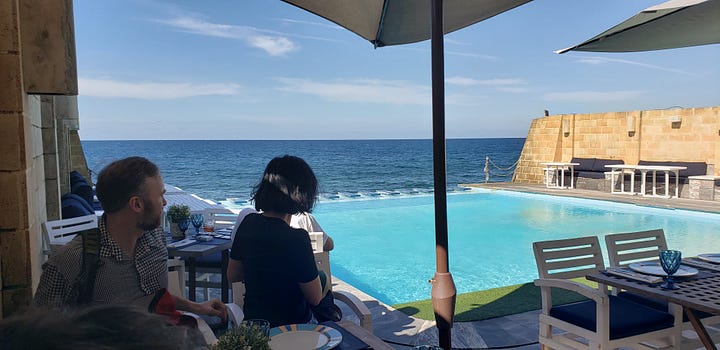
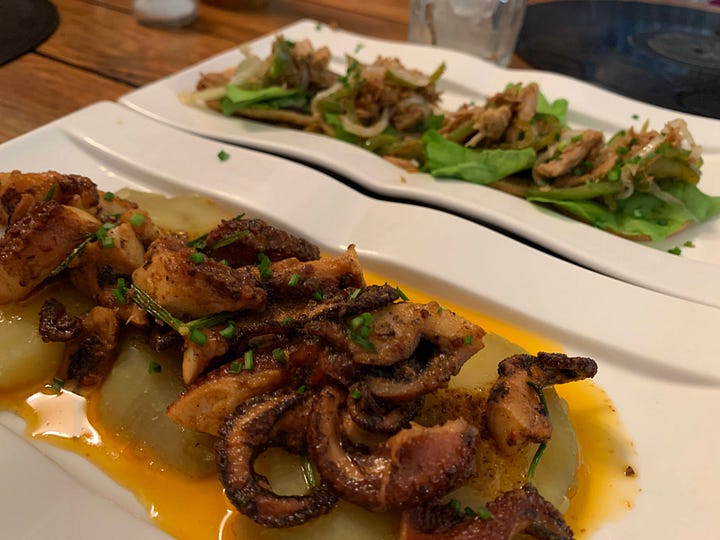
Despite the contradictions of life in Havana, and despite 60+ years of strangulation courtesy of the US blockade, there is still joyful art being made by the Cuban people. That in itself is revolutionary.
Please enjoy a scene from the Havana Jazz Festival that features burning music and dancing. It cost 10 CUP / ~3¢ USD to get in:
(btw, I’ve been trying to find the title of this exact song—if somehow you know it, please share!!)
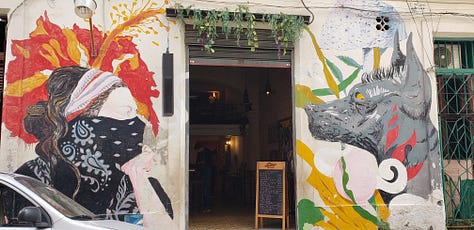
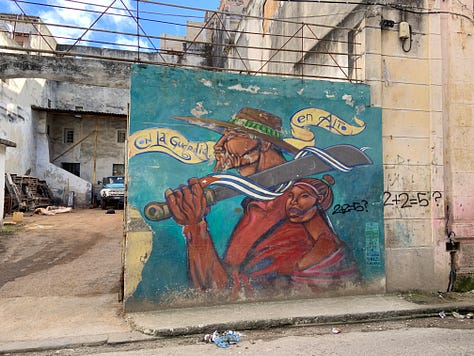
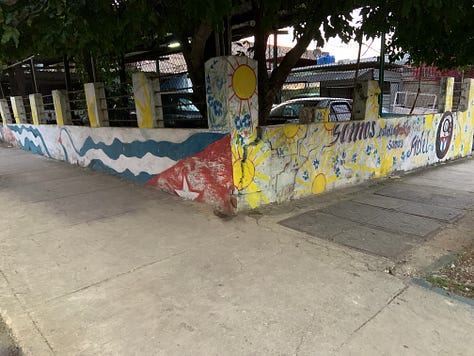

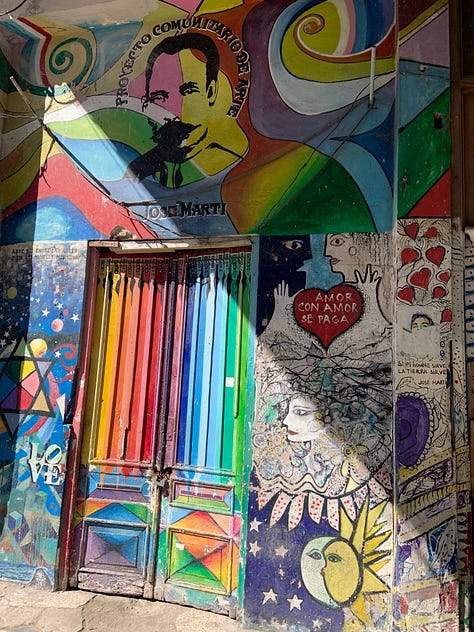
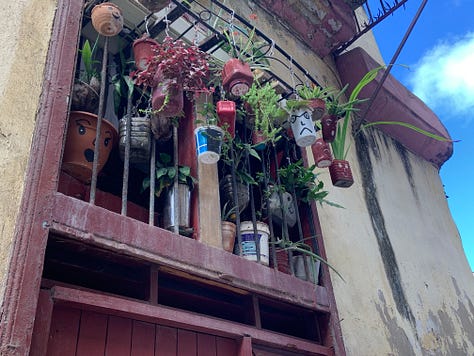
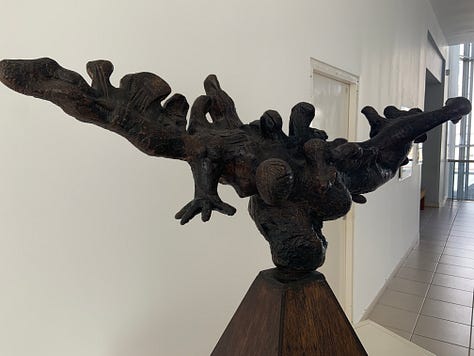
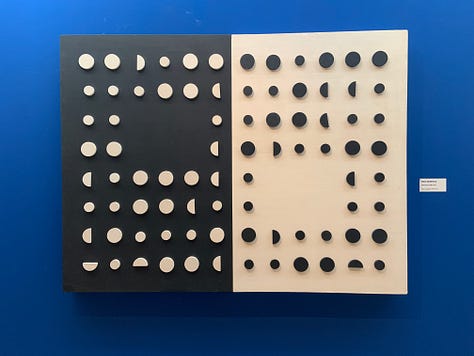
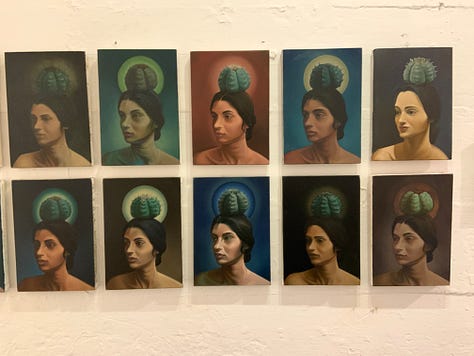
To be continued!
I’ll finish up next time, recalling some conversations with the Cuban people and more analysis in about a week.
Venceremos,
Greg

